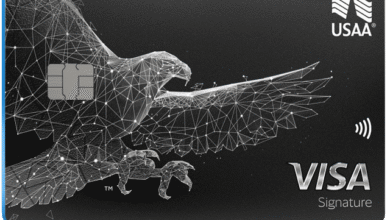VA Loans for First-Time Homebuyers

For many, buying a home is the ultimate American dream—a milestone that builds long-term financial security and generational wealth. If you’re a servicemember, veteran, or eligible surviving spouse, you have access to one of the best mortgage products available: the VA home loan.
VA loans provide military homebuyers with unmatched benefits, making homeownership more accessible and affordable.
Key Takeaways:
- VA loans offer no down payment, no private mortgage insurance (PMI), and lower interest rates, making them an excellent choice for first-time homebuyers.
- Military buyers benefit from flexible credit and debt-to-income (DTI) requirements, making qualification easier.
- VA loans offer unique refinancing options that let you replace your existing mortgage and take advantage of lower interest rates as the market changes.
Why the VA Loan Is Great for First-Time Homebuyers
If you’re buying your first home, a VA loan can make it easier to afford. Compared to standard conventional loans, VA loans offer lower monthly costs and more flexible terms — benefits available only to eligible service members, veterans, and military families.
No Down Payment
For most homebuyers, the biggest hurdle is coming up with a down payment. According to a report by the National Association of Realtors, some homebuyers say they expect it to take as long as three years to save for a down payment.
Conventional loans typically require 3-20% down, and even FHA loans require at least 3.5%. VA loans eliminate this barrier by allowing eligible buyers to purchase a home with zero down payment.
This is a major benefit for veteran homebuyers. With no down payment required, you can purchase a home without having to wait years to save up.
Most importantly, a VA loan lets you enter the housing market right away and start building equity, a key step toward long-term financial growth. While making a down payment can help by building instant equity and lowering your monthly payment, it’s not required with a VA loan. That gives you the flexibility to choose what works best for your finances.
No Private Mortgage Insurance (PMI)
Most conventional loans require PMI if you put down less than 20%, and FHA loans include mortgage insurance premiums (MIP), both of which increase your monthly costs. VA loans don’t have monthly mortgage insurance, which is a major benefit that can save you thousands over time.
That said, VA loans typically include a one-time funding fee, which serves a similar purpose to PMI. This fee can usually be rolled into the loan amount, and it’s often much lower than the long-term cost of PMI or MIP. Many Veterans are exempt from paying it altogether.
Here’s a comparison for a $300,000 loan:
| Loan Type | Monthly Mortgage Insurance | Upfront/One-Time Cost |
|---|---|---|
| Conventional | $145 – $465 (PMI) | None (if 20% down) |
| FHA Loan | $137/month (MIP) | 1.75% upfront + ongoing monthly MIP |
| VA Loan | None | 2.15% funding fee (may be waived or rolled in)* |
*VA funding fee varies by service history, loan type, and usage. Many borrowers are exempt.
Over time, skipping PMI can save you thousands, reducing your total housing costs significantly.
Lower Interest Rates
VA loans consistently offer lower interest rates than conventional mortgages. Even a small difference in rates can lead to big savings over the life of your loan.
For example:
- A $300,000 loan at 7% interest = $1,995/month in principal & interest.
- A $300,000 loan at 6.625% interest (common for VA loans) = $1,920/month.
That’s nearly $75 in monthly savings, which adds up to roughly $27,000 in interest savings over a 30-year loan.
Here’s a quick look at how VA loan rates are trending compared to conventional:
| Product | Rate | APR |
|---|---|---|
| 30-year Fixed VA Purchase | 5.70% | 5.84% |
| 30-year Fixed Purchase | 6.27% | 6.29% |
Rates based on market averages as of Oct 19, 2025.
How we source rates and rate trends
Limited Closing Costs
VA loan closing costs differ from those of conventional loans in several key ways.
One major difference is the presence of non-allowable fees—charges that the VA prohibits lenders from passing on to borrowers. To help keep VA loans affordable, the Department of Veterans Affairs restricts certain costs, such as prepayment penalties, settlement charges, and lender attorney fees.
Flexible Eligibility Requirements
VA loans offer more lenient credit and income requirements, making homeownership accessible for first-time buyers. Here’s what to expect:
Flexible Refinance Options
Since interest rates fluctuate, VA borrowers have built-in refinancing benefits:
These options make it easy to improve your mortgage terms as financial conditions change, ensuring long-term affordability.
Shopping for a Home
Once you’re preapproved for a VA loan, it’s time to start house hunting. Here are a few key factors to keep in mind:
Use a Mortgage Calculator: Get a realistic picture of what you can afford based on your income, debts, and lifestyle. Get started with our VA loan calculator here.
Identify Must-Haves vs. Nice-to-Haves: Prioritize essentials like location, school districts, and commute time.
Check Property Taxes & HOA Fees: These can significantly impact your monthly payment.
Consider Future Resale Value: Look at market trends to ensure your home is a solid investment.
Plan for Future Moves: If there’s a chance you’ll PCS in a few years, look for a home with strong rental potential or resale value. That way, you’ll have options if you need to relocate unexpectedly.
Once you’ve got your priorities in place, here’s how the VA homebuying process typically unfolds.
Buying a Home: Step-by-Step
1. Shop for a VA Mortgage Lender
Not all lenders specialize in VA loans. Look for one with VA loan expertise, competitive rates, and low fees.
2. Get Pre-Approved
Getting pre-approved helps you understand how much home you can afford and confirms that you’re financially ready to move forward. It’s a key step in setting your budget and narrowing your home search with confidence.
3. Find a Realtor
Choose an agent who understands VA loans and military moves. They can help navigate the VA appraisal process and find properties that meet VA requirements.
4. Tour Homes and Make an Offer
If possible, visit homes in person and try different times of day to get a feel for noise levels and the neighborhood vibe. But if you’re relocating due to a military move, virtual tours or help from a trusted real estate agent can stand in.
Be ready to act quickly in competitive markets, but don’t rush. It’s OK to negotiate, especially if the seller might cover closing costs.
5. Appraisal and Optional (but Recommended) Inspection
The VA appraisal ensures the home is safe, structurally sound, and worth the loan amount — but it doesn’t cover everything. That’s where a home inspection comes in. While not required for VA loans, an inspection takes a much closer look at the property’s condition, including systems like plumbing, electrical, and HVAC. It’s one of the best ways to avoid costly surprises down the road.
6. Loan Estimate and Full Approval
After the appraisal and inspection are complete, your lender will send you a Loan Estimate — a three-page form outlining your expected interest rate, monthly payment, and closing costs. Review it carefully and ask questions about anything that’s unclear.
At this stage, your lender may also request additional documents to finalize underwriting. Once everything is verified, you’ll lock in your interest rate and receive full loan approval.
7. Close on Your Home
Once your loan is fully approved, you’ll review and sign the final paperwork, pay any remaining closing costs, and complete a final walkthrough of the home. After that, you’ll get the keys and officially become a homeowner.
Buying Your Next Home
Your VA loan benefits don’t expire, meaning you can use your entitlement again in the future. When you’re ready for your next home, you can:
- Sell your first home and restore your VA loan entitlement.
- Rent out your first home while using a new VA loan for another property.
- Use partial entitlement to purchase another home if you meet lender requirements.
Related: VA Loan Entitlement Codes Explained
VA Loans for First-Time Buyers – The Bottom Line
If you’re a first-time homebuyer, navigating the mortgage process can feel overwhelming. But with the right guidance and the powerful advantages of the VA loan, your path to homeownership can be smoother than you think.
With zero down payment, no PMI, lower interest rates, and flexible eligibility, the VA loan is hands down one of the best mortgage options available, designed to make homeownership more affordable and achievable.
If you’re ready to buy your first home and you’re eligible for a VA loan, start by getting pre-approved and find a VA-savvy lender and real estate agent who can guide you through the process.
About Post Author
Source link

